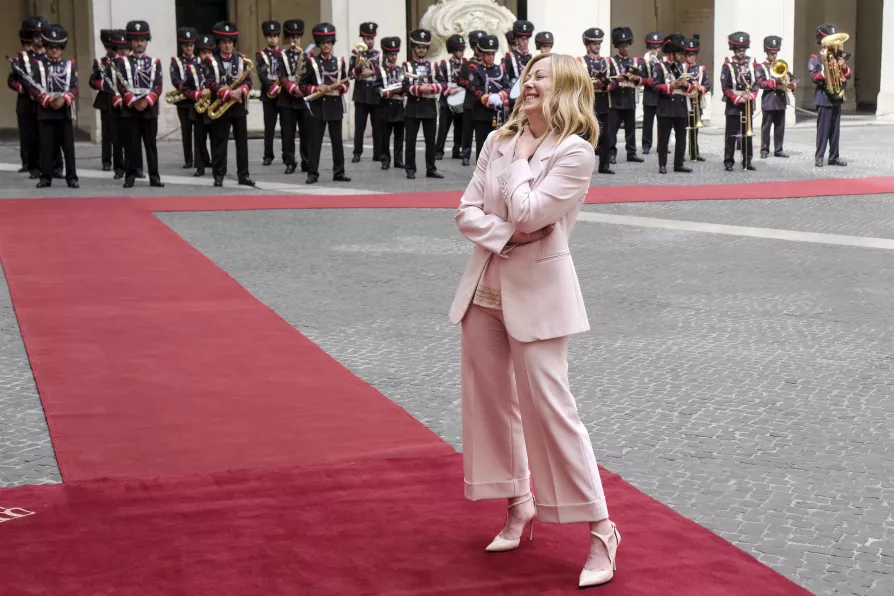SOLOMON HUGHES finds the government went along with a US scheme to distract from Israel’s lethal Gaza blockade with an impractical floating pier scheme – though its own officials knew it wouldn’t work

 Italy's Premier Giorgia Meloni reacts as an honour guard stand in background, as she waits for the Prime Minister of Palestinian Authority, Mohammad Mustafa, in Rome, May 25, 2024
[Mauro Scrobogna/LaPresse via AP]
Italy's Premier Giorgia Meloni reacts as an honour guard stand in background, as she waits for the Prime Minister of Palestinian Authority, Mohammad Mustafa, in Rome, May 25, 2024
[Mauro Scrobogna/LaPresse via AP]
In Britain we may have election fever but Europe is going to the polls too — with the far right predicted to do well across the continent in elections to the European Parliament from June 6-9.
With our sister papers Junge Welt of Germany and Arbejderen of Denmark, we compiled a series of articles looking at the nature of the far-right threat across different European countries, of which this is the first. We would like to thank Junge Welt for organising the series and translation.
Italy has been governed by three right-wing parties for one-and-a-half years. Surveys show that the governing coalition has been able to maintain its approval ratings. What is this success based on?
Giuliano Marucci: It is more due to a lack of alternatives. Although there are attempts by the social democrats (Partito Democratico, PD) and the Five Star Movement (M5S), to form an opposition bloc, they do not represent a credible alternative government.
Why is that?

As Starmer flies to Albania seeking deportation camps while praising Giorgia Meloni, KEVIN OVENDEN warns that without massive campaigns rejecting this new overt government xenophobia, Britain faces a soaring hard right and emboldened fascist thugs on the streets

On the 80th anniversary of liberation from Nazi-fascism, left forces in Italy mobilise against genocide, armament, and the Meloni government, reports ANA VRACAR












